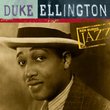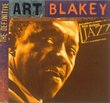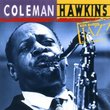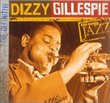| All Artists: Sidney Bechet Title: Definitive Members Wishing: 0 Total Copies: 0 Label: Columbia Europe Release Date: 11/7/2000 Album Type: Import Genres: Jazz, Pop Styles: New Orleans Jazz, Swing Jazz, Traditional Jazz & Ragtime, Dixieland Number of Discs: 1 SwapaCD Credits: 1 |
Search - Sidney Bechet :: Definitive
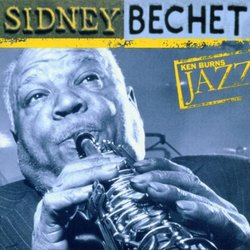 | Sidney Bechet Definitive Genres: Jazz, Pop
Sidney Bechet was one of the great pioneers of jazz, a New Orleans clarinetist of unmatched improvisational creativity who developed a highly personal voice on the difficult soprano saxophone. He could soar above an ensemb... more » |
Larger Image |
CD DetailsSynopsis
Amazon.com Sidney Bechet was one of the great pioneers of jazz, a New Orleans clarinetist of unmatched improvisational creativity who developed a highly personal voice on the difficult soprano saxophone. He could soar above an ensemble or develop lead lines with a power that rivaled trumpeters. Although he was the first great jazz soloist to record--on 1923's "Wild Cat Blues" with Clarence Williams's Blue Five--until the late 1930s, Bechet's recordings cast him invariably as a sideman. He wouldn't achieve the kind of fame that was his due until he settled in France in the 1950s. This is an excellent introduction to his work, ranging from that first extant recording to 1947. Along the way, there are early meetings with Louis Armstrong and recordings like "Shag," a spirited performance in the New Orleans ensemble style with trumpeter Tommy Ladnier and the New Orleans Foot Warmers. Some of Bechet's best work of the '30s appeared under the name of singer Noble Sissle, even when Sissle wasn't present, as on "Viper Mad," but it's Bechet's distinctive work that gives these period pieces their enduring significance. While he spent much of his career cast in the New Orleans style, Bechet was an innovator, using electric guitar in the band for his own 1938 classics "Chant in the Night" and "Jungle Blues." He finally had something like a hit when he recorded Gershwin's "Summertime" in 1939, the rich wail of his soprano both plaintive and commanding. The same distinctive way with a popular song is evident on "Love for Sale" with just a rhythm section, while there are other 1940s recordings with a host of distinguished collaborators, such as trumpeter Muggsy Spanier and trombonist Vic Dickenson. --Stuart Broomer Similar CDs
|
CD ReviewsOnly so-so compilation Eduardo Nietzsche | Houston | 03/25/2007 (3 out of 5 stars) "I normally love most things Ken Burns, but this was rather disappointing...the selections here are unremarkable and even dull often, just don't have the effortless joyful schwing of Bechet's best work but rather seem too analytical and academic. I'd much more recommend "The Legendary Sidney Bechet" and "The Best of Sidney Bechet" for those looking for an intro to Bechet's special genius." How a soprano sax should sound G. Sawaged | Canada | 09/27/2001 (5 out of 5 stars) "This was another great jazz artist that I didn't know much about prior to this Ken Burn's release. I never thought that I could love the sound of the soprano sax this much. Up until this album, whenever I thought of soprano sax, Kenny G and his mind numbing music would come to mind, and I would cringe. But, this album opened up a whole new world of music to me .. now THIS is how a soprano sax should sound. It is beautiful. Sidney Bechet is (or was) a true genius, the way he made the horn almost operatic in sound, with the wonderful throbbing vibratos. No wonder he was sometimes billed as "The Talking Saxophone". There is such depth and emotion in his playing. I highly recommend this album to all jazz fans. The booklet includes photos and an interesting essay." The Greatest Soprano - EVER! Gunnar A. Jacobsen | Sarasota, FL United States | 07/16/2003 (5 out of 5 stars) "One is grateful to Ken Burns calling attention to Jazz with his series and, there it ends! Sidney Bechet is without a doubt the greatest soprano player ever. His power was absolutely amazing. Pity the trumpet players who had to play with him, he could, and did, drown them out. I saw and heard him in person in the late 50s and I have never forgotten that evening! If it wasn't for Sidney, we wouldn't have Hodges, Wilber and many others. I have an awful lot of Bechet on recordings and I never tire of him!"
|

 Track Listings (20) - Disc #1
Track Listings (20) - Disc #1